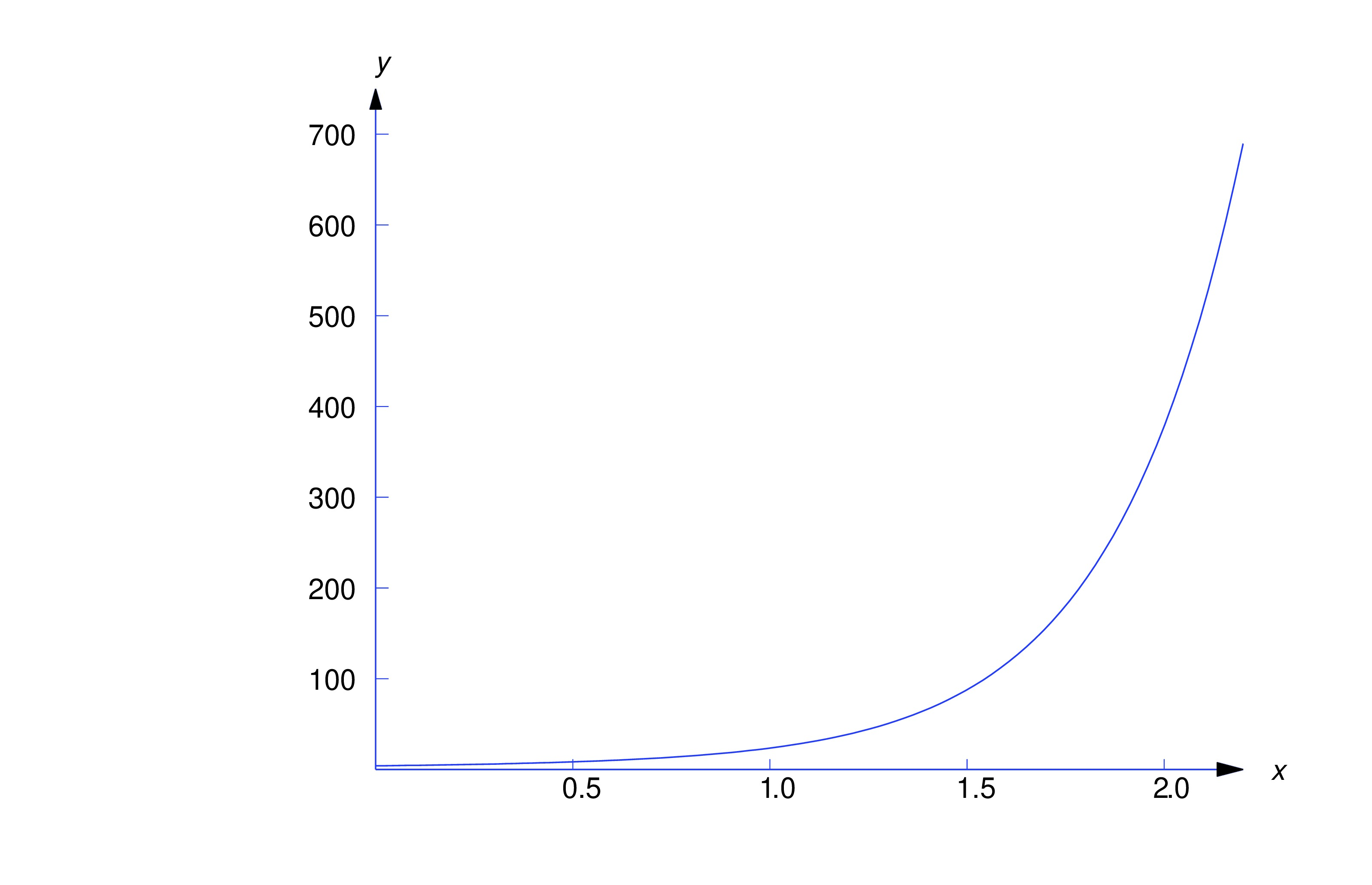We discuss the solution of an th order homogeneous linear differential equation.
Higher Order Constant Coefficients Homogeneous Equations
If are constants and , then is said to be a constant coefficient equation. In this section we consider the homogeneous constant coefficient equation
Since (eq:9.2.1) is normal on , the theorems in Trench 9.1 all apply with .As in Trench 5.2, we call
the characteristic polynomial of (eq:9.2.1). We saw in Trench 5.2 that when the solutions of (eq:9.2.1) are determined by the zeros of the characteristic polynomial. This is also true when , but the situation is more complicated in this case. Consequently, we take a different approach here than in Trench 5.2.If is a positive integer, let stand for the -th derivative operator; that is If is an arbitrary polynomial, define the operator such that whenever is a function with derivatives. We call a polynomial operator.
With as in (eq:9.2.2), so (eq:9.2.1) can be written as . If is a constant then
item:9.2.1b We must determine , and in (eq:9.2.5) so that satisfies the initial conditions in (eq:9.2.4). Differentiating (eq:9.2.5) twice yields
Setting in (eq:9.2.5) and (eq:9.2.6) and imposing the initial conditions yields The solution of this system is , , . Therefore the solution of (eq:9.2.4) is
Now we consider the case where the characteristic polynomial (eq:9.2.2) does not have distinct real zeros. For this purpose it is useful to define what we mean by a factorization of a polynomial operator. We begin with an example.
- (a)
- is the function obtained by first applying to and then applying to the resulting function
- (b)
- is the function obtained by first applying to and then applying to the resulting function.
From item:9.2.2a,
This implies that From item:9.2.2b, which completes the justification of (eq:9.2.7).From (eq:9.2.9), we can rewrite (eq:9.2.10) as which implies that any solution of is a solution of (eq:9.2.10). Therefore is solution of (eq:9.2.10).
The Wronskian of is Since is linearly independent and is the general solution of (eq:9.2.10).
It is known from algebra that every polynomial with real coefficients can be factored as where no pair of the polynomials has a common factor and each is either of the form
where is real and is a positive integer, or where and are real, , and is a positive integer. If (eq:9.2.12) holds then is a real zero of , while if (eq:9.2.13) holds then and are complex conjugate zeros of . In either case, is the multiplicity of the zero(s).By arguments similar to those used in our examples, it can be shown that
and that the order of the factors on the right can be chosen arbitrarily. Therefore, if for some then . To see this, we simply rewrite (eq:9.2.14) so that is applied first. Therefore the problem of finding solutions of with as in (eq:9.2.14) reduces to finding solutions of each of these equations where is a power of a first degree term or of an irreducible quadratic. To find a fundamental set of solutions of , we find fundamental set of solutions of each of the equations and take to be the set of all functions in these separate fundamental sets. In Exercise exer:9.2.40 we sketch the proof that is linearly independent, and therefore a fundamental set of solutions of .To apply this procedure to general homogeneous constant coefficient equations, we must be able to find fundamental sets of solutions of equations of the form and where is an arbitrary positive integer. The next two theorems show how to do this.
- Proof
- We’ll show that if is an arbitrary polynomial of degree , then is a solution of (eq:9.2.16). First note that if is any differentiable function then so Therefore Since , the last equation implies that is a solution of (eq:9.2.16) if is any polynomial of degree . In particular, each function in (eq:9.2.15) is a solution of (eq:9.2.16). To see that (eq:9.2.15) is linearly independent (and therefore a fundamental set of solutions of (eq:9.2.16)), note that if for all in some interval , then for all in . However, we know from algebra that if this polynomial has more than zeros then .
The proof of the next theorem is sketched in Exercise exer:9.2.41.
Text Source
Trench, William F., ”Elementary Differential Equations” (2013). Faculty Authored and Edited Books & CDs. 8. (CC-BY-NC-SA)